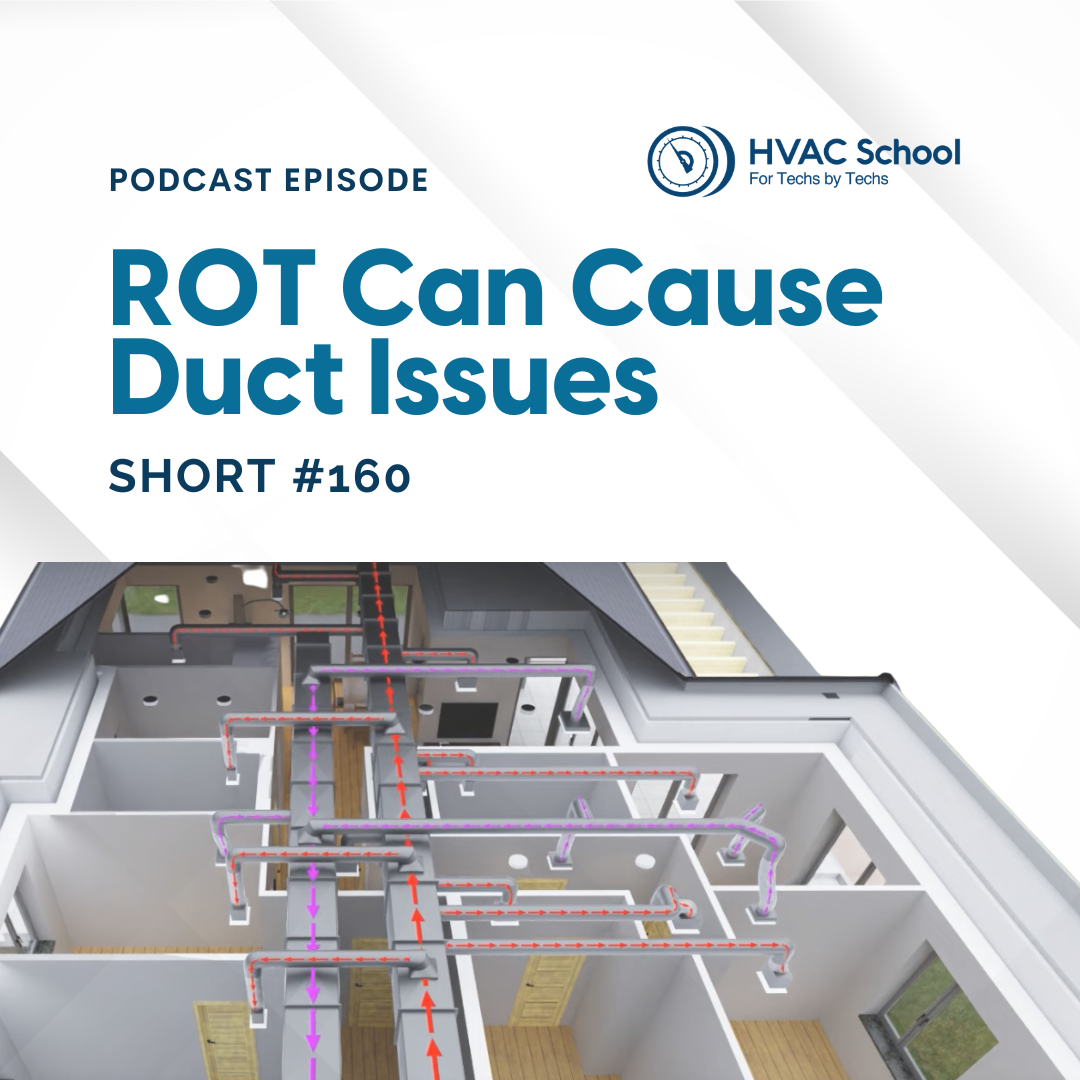ROT Can Cause Duct Issues – Short #160

In this short podcast, Bryan explains how rules of thumb (ROT) can cause duct issues. He talks about the role of friction rate in duct design as well as its intent and limitations.
Friction rate is a value located on duct calculation tools, including Ductulators. We use friction rate to predict the operating static pressure of the system, but it is often misapplied when people design their ductwork around rules of thumb. The friction rate is expressed in inches of water column (“WC), which we also use to measure static pressure. However, the operational static pressure and friction rate are NOT the same things.
Ductulators provide information about friction rate based on 100 feet of straight ductwork in the size selected, which we almost never see in the field; fittings and turns add effective length (EL), so the total effective length (TEL) is often more than 100 feet. When duct designers apply rules of thumb, like a 0.1″ friction rate, and apply it to the CFM, they don't consider the actual length of the duct. So, the ducts are often undersized and don't properly account for the actual resistance to airflow.
If you want to stop using rules of thumb, ACCA Manual D and related software can help you get more precise design parameters and account for other restrictions.
The following tech tips contain more information and specific equations to help you find the total effective length: The Friction Rate Chart (and What it Means), What the Heck is a Friction Rate? (Eric Kaiser), How to Determine the Friction Rate for Residential Duct Design (Neil Comparetto).
Learn more about the HVACR Training Symposium or buy a virtual ticket today at https://hvacrschool.com/symposium.
If you have an iPhone, subscribe to the podcast HERE, and if you have an Android phone, subscribe HERE.
Check out our handy calculators HERE.








Comments
To leave a comment, you need to log in.
Log In